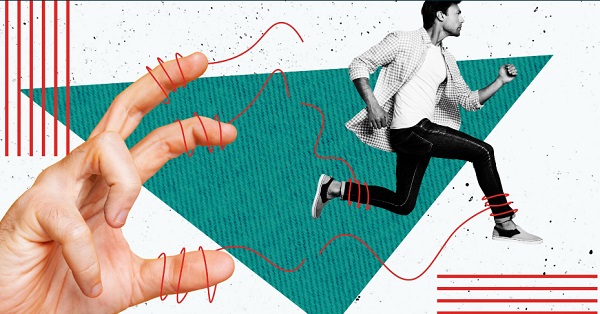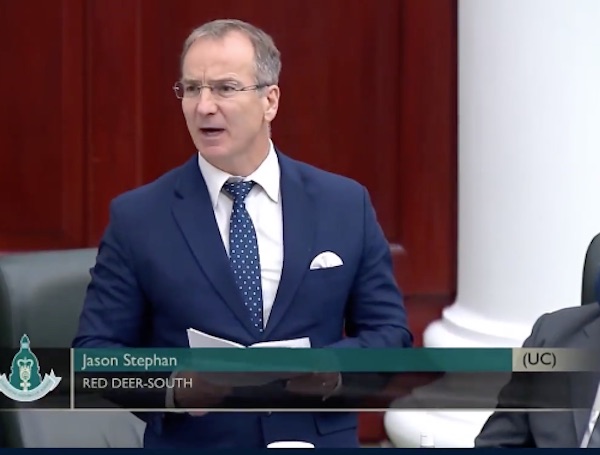National
Federal debt interest will consume nearly one quarter of income tax revenue in 2024

From the Fraser Institute
By Grady Munro and Jake Fuss
The Trudeau government will table its next budget on April 16. In recent years, the government has overseen a substantial rise in the amount of interest it must pay to service federal debt, reversing a long-standing trend of interest costs declining relative to personal income tax revenues. By 2024/25, according to projections, nearly one in four dollars of personal income tax revenue will go towards debt interest.
Just like how individuals must pay interest when they take out a mortgage, the government must also pay interest when it borrows money. These interest payments represent taxpayer dollars that don’t go towards programs or services for Canadians.
When interest costs rise faster than the government’s ability to pay—i.e. the revenues it brings in—the government will face pressure to take on more debt to maintain funding for programs and services. And by taking on more debt, this places additional upward pressure on interest costs (all else equal) and the cycle repeats.
A useful way to track this is to measure debt interest costs as a share of federal personal income tax (PIT) revenues, which represent Ottawa’s single-most important revenue source. In 2024/25, they’re expected to comprise just under half (46.4 per cent) of total revenues and therefore provide a useful gauge of the government’s ability to pay interest on its debt. As such, the chart below includes projections for federal debt interest costs as a share of PIT revenues for the two decades from 2004/05 to 2024/25.
As we can see from the chart, for many years federal debt interest costs had been declining as a share of Personal Income Tax revenues. In 2004/05, 34.6 per cent of PIT revenues went towards servicing federal debt, but by 2015/16 that share had fallen to 15.1 per cent. In other words, during the Trudeau government’s first year in office, federal interest costs consumed less than one in six dollars of personal income tax revenue paid by Canadians. Interest costs as a share of PIT revenues continued to fall for the next several years, down to a low of 11.7 per cent in 2020/21. However, this marked the end of the decline, and the years since have seen rapid growth in debt interest costs that far exceeds growth in PIT revenues.
In the two years from 2020/21 to 2022/23, federal interest payments rose from 11.7 per cent of PIT revenues to 16.8 per cent. And by the end of the upcoming fiscal year in 2024/25, debt interest payments will reach a projected 23.4 per cent of PIT revenues. In four years, debt interest payments are expected to have gone from consuming about one in nine dollars of PIT revenue to nearly one in four dollars. Put differently, nearly one quarter of the money taxpayers send to Ottawa in the form of personal income taxes will not go towards any programs or services in 2024/25.
The causes of this sudden rise in interest costs as a share of PIT revenues are the combined effects of a substantial accumulation of debt under the Trudeau government, and a recent rise in interest rates. From 2015/16 to 2022/23, the Trudeau government added $820.7 billion in gross federal debt, and by 2024/25 total debt will reach a projected $2.1 trillion—roughly double the amount inherited by the current government. Meanwhile, from 2022 to 2023, the Bank of Canada increased its policy interest rate from a low of 0.25 per cent to the current rate of 5.00 per cent.
Simply put, federal debt interest costs have risen and are expected to eat up almost one quarter of federal PIT revenues by 2024/25. To help prevent taxpayers from devoting an even larger share of their tax dollars towards debt interest, the Trudeau government should cease its heavy reliance on borrowing in this year’s federal budget.
Authors:
Great Reset
Canada’s MAiD (State Sanctioned Murder) Report Just Dropped

It’s More Horrifying Than Anyone Will Admit
There is no dignity in a society that sees the suffering and chooses to eliminate the sufferer instead of the suffering.
Canada finally released its 2024 MAiD (state sanctioned murder) report, shockingly quiet so people wouldn’t see it. Right after the budget, and right before Christmas. A late-November drop, as if 16,499 state-sanctioned murders were an administrative side note instead of a national alarm bell, one that should be absolutely terrifying Canadians. That number is a almost a 7% increase!!! from the year prior. Euthanasia now accounts for 5.1% of all deaths in the country. Let that sit for a minute. More than one out of every twenty deaths in Canada is no longer natural, accidental, or medical it’s chosen, coerced, approved, and facilitated by the state.
Now the most disturbing trend isn’t the overall rise. It’s the massive increase in Track 2 deaths, these are people who were NOT AT ALL terminally ill. Those deaths rose by 17%.
Kelsi Sheren is a reader-supported publication.
To receive new posts and support my work, consider becoming a free or paid subscriber.
17%!
Track 2 is MAiD’s (state sanctioned murder) quiet backdoor, one that almost anyone can access. People who aren’t dying, but are suffering, disabled, lonely, financially struggling, or simply worn down by a system that failed to care for them. The government likes to use sterile language “grievous and irremediable condition” but it refuses to define it. That ambiguity isn’t an accident. It’s policy. It’s how they kill people without justification.
The numbers don’t lie, even when the government tries to hide them. Since legalization, Canada has recorded 76,475 deaths by MAiD up to the end of 2024. Realistically, by today we’re closing in on 92,000.
That’s the population of a mid-sized city. Gone.
92,000 human beings. Gone, before their time all because CAMAP (Canadian Association of MAiD Assessors and Providers) convinced people who were suffering they were too damn weak to try.
Quebec leads the country with 5,998 deaths in 2024. Ontario follows with 4,944, then British Columbia at 2,997. Even these numbers don’t match what provincial reports say. Quebec claims 6,058. BC says 3,000. Why the discrepancy? No one seems eager to answer.
When the data moves faster than the government’s honesty, you know something’s off and something been off for a minute now.
Track 2 deaths have always been the canary in the coal mine, yet no ones seems to care unless it’s one of their family members. Those not tied to terminal illness hit 732 cases in 2024. In 2021 there were 224. The curve isn’t just rising; it’s accelerating at a pace that will destroy a country.
And who are these people?
They’re younger. They’re more often women. They’re overwhelmingly people living with disabilities. They are Canadians who needed support and instead got a syringe. More than 61% of Track 2 deaths were people living with disabilities. Yet many disabled Canadians don’t even identify as disabled on paper. So the real number? Higher. Much higher.
Every major reason listed for choosing MAiD (state sanctioned murder) loss of independence, loss of mobility, inability to participate in meaningful activities is directly tied to disability or chronic health issues. When your supports are stripped, “choice” becomes a fiction.
The “other” category, is where any sort of accountability goes to die in this country along with our souls. The most suspicious data point continues to grow unnoticed. The “other” category is over 46% of disabled Track 1 deaths and 56% of disabled Track 2 deaths are filed under “other.”
What’s in “other”?
Organ failure. Autoimmune disease. Frailty. Chronic pain. Diabetes. Mental disorders.
In any honest system, these would not be “miscellaneous.” In Canada’s system, they are conveniently undefined so nothing can be challenged.
People choosing Track 2 death are more likely to be poor, living in struggling neighbourhoods, in institutions and on disability. This isn’t compassion. It’s triage disguised as mercy. When life becomes unaffordable, MAiD (state sanctioned murder) becomes the “cheap solution.”
One of the leading causes of this choice to die is loneliness….this part should haunt every Canadian with a conscience. The report tries to downplay loneliness as a factor, but the numbers betray reality:
21.9% of Track 1 deaths
44.7% of Track 2 deaths
…were tied single handedly to loneliness and isolation.
That’s at least 3,800 people in 2024 who died because they were alone.
But anyone who’s worked with veterans, trauma survivors, or the disabled knows the truth loneliness is wildly underreported. People list their medical condition to qualify. But loneliness and despair? That’s the gasoline soaking everything underneath.
Track 2 recipients were three times more likely to be receiving mental health or social service support compared to Track 1. The mental illness “safeguards”? They’re paper-thin.
The government wants us to believe MAiD (state sanctioned murder) is about dignity. But dignity is a human experience, not a checkbox. Dignity requires connection, support, purpose, safety. None of those can be injected into a vein.
MAiD (state sanctioned murder) was sold as a last resort for the dying. It is now an early exit for the neglected. There is no integrity in a system where people choose death because life became bureaucratically inconvenient. There is no compassion in telling a disabled person the waitlist for care is years but death is available next Tuesday. There is no dignity in a society that sees the suffering and chooses to eliminate the sufferer instead of the suffering.
Parliament is currently debating Bill C-218, which would stop the expansion of MAiD for mental illness. Given what the data shows, mental illness is already driving many Track 2 deaths, even though it isn’t technically allowed on its own.
Canada is no longer drifting, its fully submerged in the dark and this is something that can’t be undone once normalized. MAiD (state sanctioned murder) is no longer a rare compassionate exception. It is becoming a cultural default for people society doesn’t know how to support.
If we don’t reverse this slide now, we’ll look back and wonder how we ever confused convenience with compassion. This system isn’t mercy. It’s abandonment dressed up as policy.
The conversation needs to get louder, not gentler and I plan to make it so loud the pro death cult’s ears bleed.
KELSI SHEREN
https://csfv.gouv.qc.ca/
https://alexschadenberg.
https://alexschadenberg.
https://alexschadenberg.
– – – – – – – – – – – – –
One Time Donation! – Paypal – https://paypal.me/
Buy me a coffee! – https://buymeacoffee.com/
Let’s connect!
Youtube – https://www.youtube.com/@
Substack: https://substack.com/@
TikTok – https://x.com/KelsiBurns
MAiD
Health Canada report finds euthanasia now accounts for over 5% of deaths nationwide

From LifeSiteNews
Internal documents from Ontario doctors in 2024 that revealed Canadians are choosing euthanasia because of poverty and loneliness, not as a result of an alleged terminal illness.
Death by doctor-assisted lethal injection, under the title Medical Assistance in Dying (MAiD), now accounts for over 5 percent of all deaths in Canada.
In November, Health Canada published the Sixth Annual Report on Medical Assistance in Dying, which tracked the expansion of euthanasia in 2024, with 16,499 Canadians receiving MAiD, amounting to 5.1 percent of the total deaths in Canada.
“The Government of Canada will continue its work to help ensure that the legislation on MAiD reflects the needs of people in Canada, protects those who may be vulnerable, and supports autonomy and freedom of choice,” the report asserts.
Health Canada noted that MAiD is not considered a cause of death by the World Health Organization and, therefore, “the number of MAiD provisions should not be compared to cause of death statistics in Canada in order to determine the prevalence (the proportion of all decedents) nor to rank MAiD as a cause of death.”
However, the government agency did admit that 16,499 people received MAiD in 2024, which amounted to 5.1 percent of “people in Canada who died.”
The report noted that that was “a small (0.4%) increase from 2023,” adding that “this percentage may change with final counts of deaths in Canada from Statistics Canada.”
Notably, the year-over-year increase was 6.9 percent, a significant slowdown from prior years, such as the 36.8 percent increase from 2019–2020. Health Canada suggested that MAiD provisions are beginning to “stabilize,” though long-term trends require more years of data.
According to the data, 95.6 percent of the deaths were Track 1, meaning those whose death was foreseeable, compared to only 4.4 percent being Track 2 requests, which end the lives of those who are not terminally ill but have lost the will to live due to their having chronic health problems.
“Although Track 2 provisions represented 4.4% of MAiD cases in 2024, they represented close to a quarter (24.2%) of all MAiD requests that were assessed as ineligible,” the report stated.
At the same time, internal documents from Ontario doctors in 2024 that revealed Canadians are choosing euthanasia because of poverty and loneliness, not as a result of an alleged terminal illness.
The report further revealed that 63.6 percent of the Canadians who were euthanized reported cancer as their underlying medical condition.
Currently, wait times to receive genuine health care in Canada have increased to an average of 27.7 weeks, leading some Canadians to despair and opt for assisted suicide instead of waiting for medical aid. At the same time, sick and elderly Canadians who have refused to end their lives have reported being called “selfish” by their providers.
Meanwhile, the Liberal government has worked to expand euthanasia 13-fold since it was legalized, making it the fastest growing euthanasia program in the world.
The most recent reports show that euthanasia is the sixth highest cause of death in Canada; however, it was not listed as such in Statistics Canada’s top 10 leading causes of death from 2019 to 2022.
Asked why it was left off the list, the agency said that it records the illnesses that led Canadians to choose to end their lives via euthanasia, not the actual cause of death, as the primary cause of death.
-

 National1 day ago
National1 day agoMedia bound to pay the price for selling their freedom to (selectively) offend
-

 Business1 day ago
Business1 day agoIs there a cure for Alzheimer’s Disease?
-

 Bruce Dowbiggin1 day ago
Bruce Dowbiggin1 day agoSometimes An Ingrate Nation Pt. 2: The Great One Makes His Choice
-

 Alberta1 day ago
Alberta1 day agoNew era of police accountability
-

 C2C Journal1 day ago
C2C Journal1 day agoLearning the Truth about “Children’s Graves” and Residential Schools is More Important than Ever
-

 Energy2 days ago
Energy2 days agoCanadians will soon be versed in massive West Coast LPG mega-project
-

 Artificial Intelligence2 days ago
Artificial Intelligence2 days ago‘Trouble in Toyland’ report sounds alarm on AI toys
-

 Brownstone Institute1 day ago
Brownstone Institute1 day agoThe Unmasking of Vaccine Science








